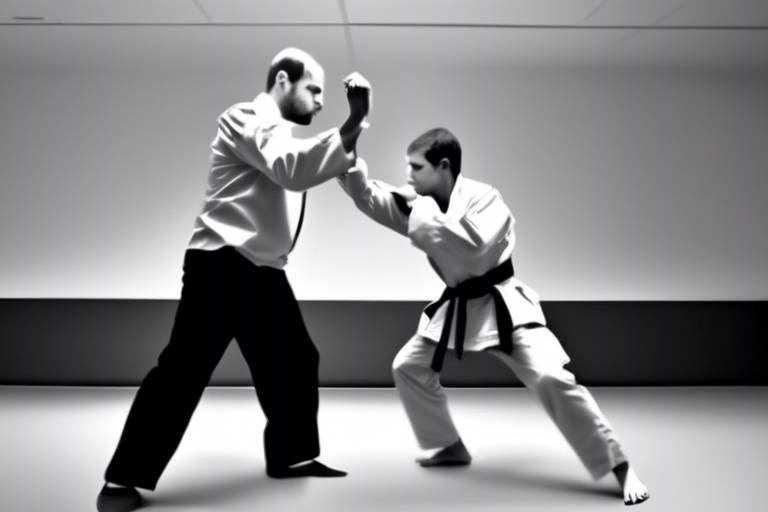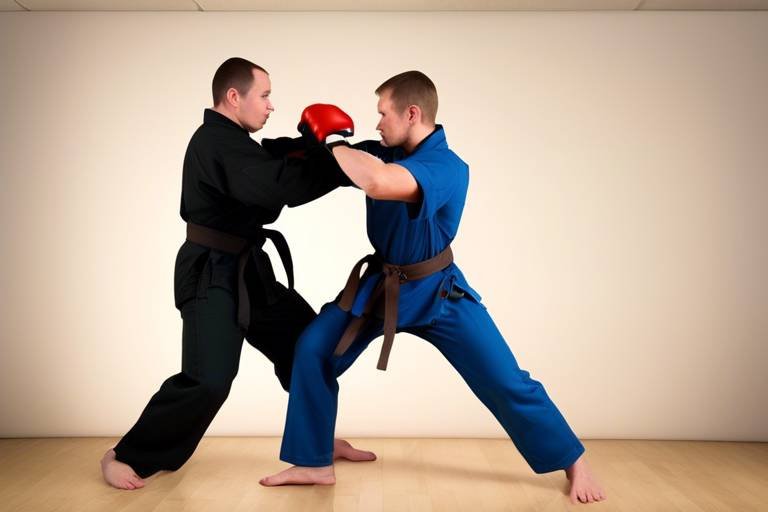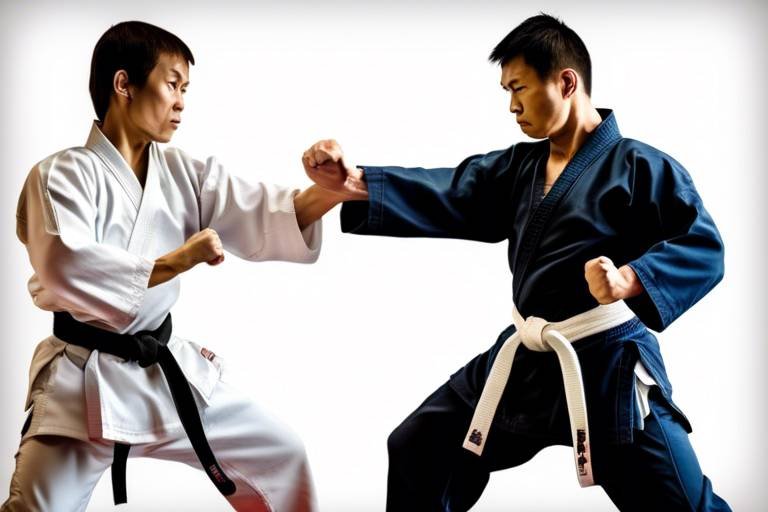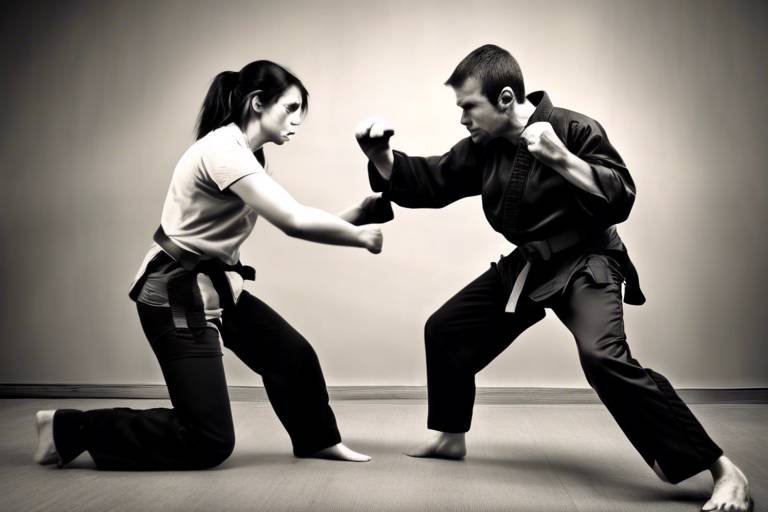Learning the Art of Distraction as a Self-Defense Technique
In an unpredictable world, being prepared for any situation is crucial. One of the most intriguing yet often overlooked strategies for self-defense is the art of distraction. Distraction isn't just about making noise or creating chaos; it's about using your wits to manipulate the attention of a potential attacker, giving you the precious seconds needed to escape or react. Imagine a magician performing a trick—while the audience is fixated on one hand, the other is free to do something unexpected. Similarly, in self-defense, the goal is to redirect an attacker's focus, creating an opportunity for a safe exit.
Understanding how distraction can serve as a protective mechanism involves delving into the psychology behind it. Our brains are wired to respond to threats, often in a fight-or-flight manner. However, by employing distraction techniques, we can create a moment of confusion or hesitation in an attacker, allowing us to break free from a dangerous situation. This article will explore various methods of distraction, from verbal cues to environmental tactics, ensuring you're equipped with the knowledge to enhance your personal safety.
To truly grasp the effectiveness of distraction, it’s essential to understand the psychological mechanisms at play. When faced with a threat, our brains enter a heightened state of alertness, focusing on the danger at hand. However, by introducing a distraction, we can momentarily shift that focus. For instance, if an attacker is confronted with an unexpected shout or a sudden movement, their brain has to process this new information, which can create an opening for escape.
Moreover, the element of surprise plays a significant role in this strategy. Just as a sudden loud noise can startle someone, a well-timed distraction can disrupt an attacker's momentum. This disruption can lead to confusion, allowing the intended victim to seize the moment and flee. Understanding these psychological principles not only empowers individuals but also highlights the importance of remaining calm and resourceful in high-stress situations.
Distraction techniques can be categorized into three primary types: verbal, physical, and environmental. Each of these serves a unique purpose in diverting an attacker's attention, and knowing when and how to use them can significantly enhance your self-defense strategy.
Verbal distractions can be incredibly effective in redirecting an attacker's focus. Techniques such as shouting, asking unexpected questions, or even creating a loud noise can buy you those critical seconds needed for escape. For example, shouting phrases like "Help!" or "Fire!" can draw attention from bystanders, potentially deterring the attacker. It's all about creating a sense of urgency and confusion.
Employing confusing statements can disorient an attacker further. Imagine throwing out a random question or ambiguous statement in the heat of the moment—this can disrupt their thought process and create an opening for you to act. Statements like "Why are you doing this?" or "Do you really want to hurt someone?" can instill doubt and hesitation, giving you the upper hand.
Believe it or not, humor can be a powerful tool in high-stress situations. A light-hearted comment or an unexpected joke can diffuse tension and redirect attention away from a potential threat. While it may seem counterintuitive, laughter can create a shared human connection, momentarily breaking down the barriers of aggression. Picture this: instead of panicking, you manage to crack a joke that catches your attacker off guard. The momentary lapse in their focus could be all you need to escape.
Physical distractions involve using your body movements or nearby objects to divert attention. Techniques like sudden movements, throwing items, or even using your surroundings can create a momentary lapse in focus. For instance, if you find yourself in a threatening situation, a quick, unexpected movement can cause an attacker to reevaluate their approach, providing you with the opportunity to escape.
Utilizing your surroundings to create distractions can be a smart strategy. Whether it's leveraging noise from a crowded area or using obstacles to obstruct an attacker's path, the environment can serve as an ally in your self-defense efforts.
Crowded spaces can provide both cover and distraction. By strategically navigating through a crowd, you can evade threats and create opportunities for escape. The hustle and bustle of a busy street or a packed venue can serve as a shield, making it harder for an attacker to maintain focus on you. Remember, in a crowd, you are not just a target; you are a moving part of a larger, chaotic environment.
Making noise can attract attention and deter attackers. Practical ways to use sound include activating alarms, shouting, or using personal safety devices designed to create loud noises. These sounds not only alert others to your situation but can also startle an attacker, giving you the chance to escape. Think of it as ringing a bell in a quiet room—everyone turns to see what’s happening, and that’s your moment to act.
- What are some effective verbal distractions? Shouting for help, asking unexpected questions, or creating noise can all serve as effective verbal distractions.
- Can humor really help in a self-defense situation? Yes! Humor can diffuse tension and redirect attention, potentially giving you an opening to escape.
- How can I use my environment to distract an attacker? Leverage crowds, noise, and obstacles around you to create distractions that can aid in your escape.
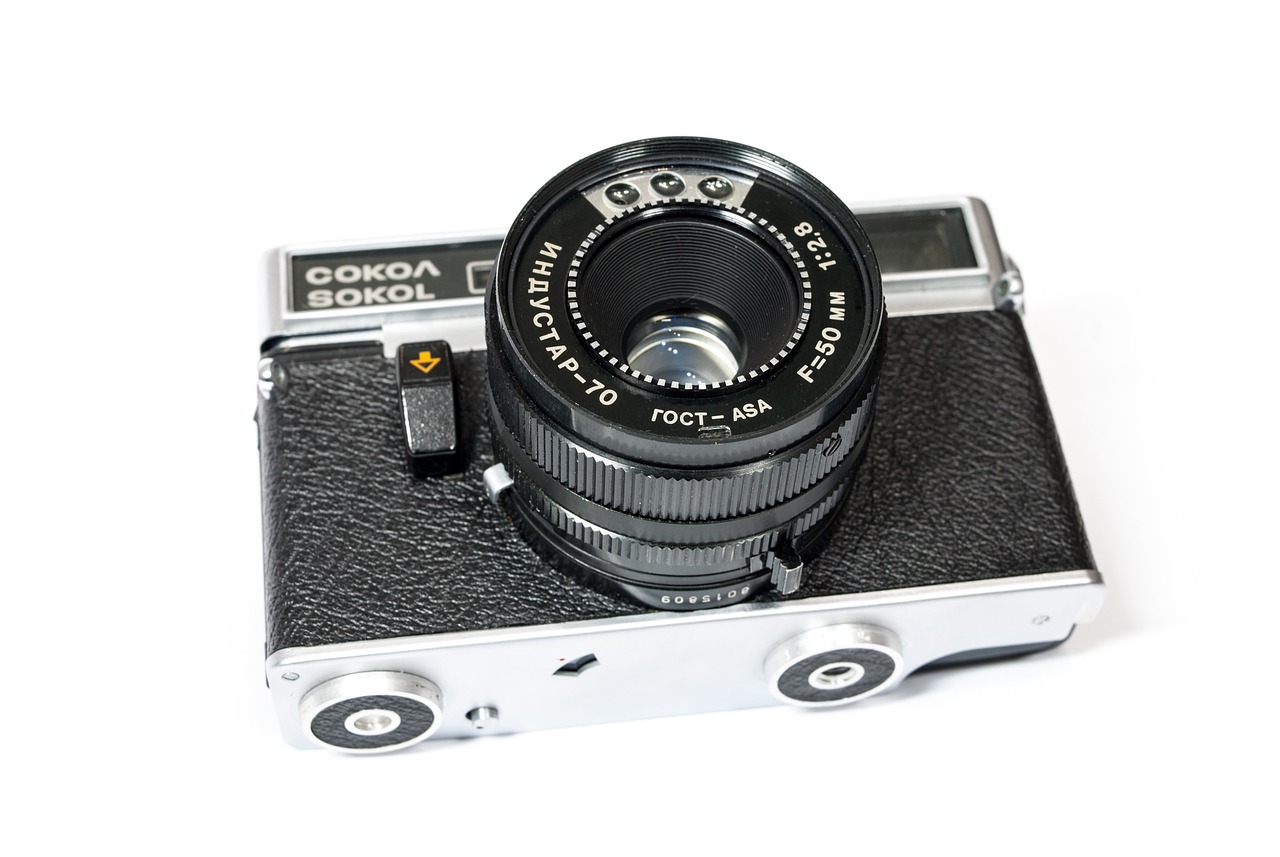
The Psychology Behind Distraction
Understanding the psychological mechanisms of distraction is crucial to grasping its effectiveness in self-defense situations. Our brains are wired to process threats and respond to them, often in ways that can be predictable. When faced with a potential danger, the brain enters a state of heightened alertness, ready to react. However, this very state can be exploited through distraction, creating opportunities for escape or defense. Think of it like a magician performing a trick; while your attention is drawn to one hand, the other is free to do something unexpected. This is the essence of distraction in self-defense.
When an individual perceives a threat, their brain typically goes through a series of responses, commonly referred to as the fight or flight response. This response is governed by the amygdala, which is responsible for detecting fear and preparing for emergency events. Distraction can interrupt this cycle, allowing the victim to regain control. By diverting an attacker's attention, the victim can create a window of opportunity to escape or defend themselves. This is where the art of distraction becomes an invaluable tool.
Moreover, the effectiveness of distraction is often enhanced by the element of surprise. When an attacker expects a certain reaction, they can become vulnerable when faced with something unexpected. For instance, shouting an unexpected phrase or making a sudden movement can disrupt their focus and momentarily confuse them. This confusion can lead to hesitation, giving the intended victim a chance to escape. In essence, distraction acts as a psychological barrier that can be both surprising and explosive, turning the tables in a confrontation.
In addition to the immediate effects of distraction, there are also long-term psychological benefits for those who practice these techniques. Regularly engaging in distraction strategies can boost one's confidence in handling potentially dangerous situations. It’s like training for a sport; the more you practice, the better you become at anticipating and reacting to challenges. Building this mental resilience not only prepares individuals for real-life scenarios but also instills a sense of empowerment.
To summarize, the psychology behind distraction in self-defense is a fascinating interplay between perception, reaction, and opportunity. By understanding how our brains process threats and how attention can be diverted, individuals can enhance their personal safety in various situations. Distraction is not just a mere tactic; it is a profound psychological strategy that can turn the tide in critical moments.
- What is the fight or flight response? The fight or flight response is a physiological reaction that occurs in response to a perceived harmful event, attack, or threat to survival.
- How can distraction be used effectively in self-defense? Distraction can be used effectively by creating unexpected noises or movements that divert an attacker's attention, providing an opportunity to escape.
- Are there any risks associated with using distraction techniques? While distraction can be effective, it is essential to assess the situation carefully, as it may not always guarantee safety.
Types of Distraction Techniques
When it comes to self-defense, distraction techniques are like a magician's sleight of hand—only instead of pulling a rabbit out of a hat, you’re pulling yourself out of a potentially dangerous situation. These techniques can be categorized into three main types: verbal, physical, and environmental distractions. Each serves a unique purpose and can be employed effectively depending on the circumstances. Understanding these methods can empower you to act decisively when faced with a threat.
Verbal distractions are often the first line of defense. Imagine you’re confronted by an aggressive individual. Instead of freezing in fear, you could shout something unexpected, like “Do you know where the nearest coffee shop is?” This not only catches the assailant off guard but also buys you precious seconds to assess your options. The power of words should never be underestimated; they can redirect attention and disrupt an attacker's focus. Here are some effective verbal techniques:
- Asking Questions: Engaging the attacker in dialogue can create confusion and delay their actions.
- Creating Noise: Yelling or making loud sounds can attract attention from bystanders, which might deter the attacker.
- Using Confusing Statements: Phrases that don't make sense can momentarily disorient the assailant.
Alongside verbal distractions, physical distractions are equally important. These involve using your body or nearby objects to divert attention. For instance, a sudden, unexpected movement, like jumping to the side or waving your arms, can catch someone off guard. You could also throw an object—like your bag or keys—away from you to create a momentary lapse in the attacker's focus. This split second could be all you need to make your escape. Here’s how to effectively utilize physical distractions:
- Sudden Movements: Quick, erratic movements can confuse an attacker.
- Throwing Objects: Using items around you can create a diversion and provide a chance to flee.
Finally, we have environmental distractions. Your surroundings can be your best ally. Think about it—crowded places, loud noises, and obstacles can all serve as shields. For example, if you find yourself in a bustling area, weaving through the crowd can help you evade an attacker. Additionally, creating noise through alarms or emergency devices can attract attention and deter threats. Utilizing your environment effectively can turn the tables in your favor.
In summary, mastering distraction techniques can significantly enhance your personal safety. By understanding how to blend verbal, physical, and environmental distractions, you can create opportunities to escape dangerous situations. Remember, the goal is to divert attention and buy yourself time, allowing you to navigate away from harm.

Verbal Distractions
When it comes to self-defense, can be a surprisingly effective tool. Imagine you're in a tense situation, and instead of panicking, you start talking. Sounds simple, right? But the power of words can shift the dynamics of an encounter dramatically. Using your voice to create a distraction can buy you precious seconds to escape or prepare for further action. Think of it as a magician’s trick—while the audience is focused on one hand, the other hand is free to perform the real magic.
One effective technique is to shout unexpected phrases or questions. For instance, yelling something like, “Do you know where the nearest coffee shop is?” can momentarily confuse an attacker. This sudden change in conversation can disrupt their thought process, making them pause and reconsider their actions. It’s like throwing a curveball in a baseball game; it catches them off guard and gives you the upper hand.
Another method involves creating noise through your voice. You can raise your voice to attract attention from bystanders. For example, yelling “Help!” or “Fire!” can not only draw attention to your situation but also create a sense of urgency that might deter an attacker. The more noise you make, the less likely the attacker will want to stick around. It’s a classic case of making your voice count when it matters most.
Employing humor can also serve as a verbal distraction. In high-stress situations, a light-hearted comment can defuse tension. Picture this: you’re confronted by someone aggressive, and instead of cowering, you say something like, “Is this a bad time for a joke?” This unexpected twist not only catches them off guard but also shifts the atmosphere from hostile to absurd, giving you a chance to escape. Humor can be a shield, protecting you from the weight of fear.
To sum it up, verbal distractions are all about thinking on your feet and using your voice as a weapon. Whether it’s shouting, asking questions, or making jokes, the goal is to redirect the attacker's focus away from you. Just remember, the key is to be unpredictable. Keep them guessing, and you’ll create the openings you need to take control of the situation.
As you practice these techniques, consider scenarios where they might be useful. Role-playing with friends or family can help you become more comfortable using your voice in unexpected ways. After all, the best defense is one that feels natural and instinctive.

Creating Confusion
When it comes to self-defense, one of the most effective strategies can be creating confusion in your attacker. Think about it: if you can throw someone off their game, you create a window of opportunity to escape or defend yourself. The brain processes information in a linear fashion, and by introducing unexpected or ambiguous statements, you can disrupt their thought process. For instance, imagine you’re cornered by someone who means you harm. Instead of panicking, you could shout something completely unrelated, like, "Did you see that giant squirrel over there?" This sudden shift in focus can make them pause, and in that moment of confusion, you can make your move.
But how do you effectively create confusion? It's all about the delivery and the context. You want to choose words or phrases that are out of place or nonsensical, which can leave your attacker bewildered. Here are some techniques you might consider:
- Ambiguous Statements: Use phrases that don't make sense in the current context. For example, "I can't believe how many jellybeans I have!" This can create a moment of disorientation.
- Unexpected Questions: Pose random questions that require thought, such as, "What’s your favorite dinosaur?" This can catch them off guard and make them momentarily forget their intention.
- Exaggeration: Overstate something to the point of absurdity. Saying, "I just saw a unicorn fly by!" can elicit confusion and disbelief.
In addition to verbal confusion, body language plays a crucial role. Sudden gestures or movements can also add to the chaos. For example, if you suddenly point in a direction and shout, "Look over there!" while simultaneously moving in the opposite direction, you create a multi-faceted distraction that can be hard for an attacker to process. It’s like throwing a curveball in a baseball game; they’re expecting a straight pitch, and suddenly, the ball is coming from a different angle.
Moreover, the effectiveness of creating confusion is rooted in its unpredictability. Attackers often rely on their preconceived notions of how a situation will unfold. By introducing an element of surprise, you can shift the power dynamic in your favor. Just as a magician distracts the audience with one hand while performing a trick with the other, you can use verbal and physical distractions to create an opening for escape. Remember, the goal is to buy yourself time and space, and confusion can be a powerful ally in that endeavor.
- How does creating confusion help in self-defense?
Creating confusion disrupts the attacker's thought process, giving you a crucial moment to escape or defend yourself.
- What are some effective phrases to use?
Phrases that are unexpected or nonsensical, such as "Did you see that giant squirrel?" can effectively divert attention.
- Can body language also contribute to confusion?
Absolutely! Sudden movements or gestures can enhance verbal distractions and create a multi-layered approach to diverting attention.

Using Humor
In the realm of self-defense, one might not immediately think of humor as a viable tactic. However, using humor can be a surprisingly effective way to diffuse tension and redirect an attacker's focus. Imagine being confronted by a potential threat; the atmosphere is thick with fear and anxiety. Now, picture yourself making a light-hearted comment or joke. This unexpected twist can catch the attacker off guard, momentarily disrupting their aggression and allowing you a crucial window to escape.
Humor works on several psychological levels. First, it can break the ice in a high-stress situation, creating a moment of confusion. When an attacker hears something unexpected, like “Did you know that I can juggle? Let me show you!” it can momentarily distract them from their intentions. This kind of verbal distraction can be incredibly powerful. It shifts the focus from the confrontation to the absurdity of the statement, allowing you to regain control of the situation.
Moreover, laughter is a natural human response that can lighten the mood. In a situation where fear is the primary emotion, introducing humor can create a psychological shift. It’s like throwing a pebble into a still pond; the ripples can spread out, affecting the entire environment. Here are a few ways humor can be utilized effectively:
- Self-deprecating humor: Making a joke at your own expense can humanize you and make you less of a target. For example, saying something like, “I’m just here trying to figure out my life, and you want to make it difficult?” can make the attacker reconsider their actions.
- Absurdity: Using absurd statements can confuse the attacker. Phrases like “I hope you like puppies because I have a whole army of them!” can create a moment of bewilderment.
- Unexpected questions: Asking something off-the-wall, like “Do you believe in aliens?” can shift the attacker’s mindset, giving you the precious seconds needed to escape.
In a society where violence can sometimes feel like a looming shadow, humor acts as a shield, providing a unique way to navigate dangerous situations. It’s not about making light of the threat itself but rather about reclaiming your power in a moment that feels out of control. Just like a comedian uses timing to land a punchline, you can use your wit to create openings for escape.
Ultimately, incorporating humor into your self-defense strategy can be a game-changer. It’s about being quick on your feet, both literally and figuratively. Humor can help you take a step back from fear, allowing you to think more clearly and act more decisively. So, the next time you find yourself in a tense situation, remember: a well-timed joke might just be your best ally.
Q1: Can humor really help in a self-defense situation?
A1: Yes! Humor can distract an attacker and create confusion, giving you a chance to escape.
Q2: What type of humor is most effective in these situations?
A2: Self-deprecating humor and absurd statements tend to work well as they can catch an attacker off guard.
Q3: Is it safe to joke during a confrontation?
A3: While humor can be effective, it's essential to assess the situation carefully. Use your judgment to determine if humor is appropriate.
Q4: How can I practice using humor in self-defense scenarios?
A4: Role-playing different scenarios with friends can help you practice your responses, including using humor effectively.

Physical Distractions
When it comes to self-defense, can play a crucial role in turning the tide in your favor. Imagine finding yourself in a potentially dangerous situation; your heart races, and every instinct tells you to flee. But what if instead of running, you could create a moment of confusion that allows you to escape? Physical distractions are all about using your body and the environment around you to divert an attacker's attention, giving you a critical edge when seconds count.
One effective technique is employing sudden movements. Think about a time when something unexpected happened that made you jump—like a loud noise or a sudden gesture. This element of surprise can be your best ally. For instance, if someone approaches you aggressively, a quick, unexpected movement can catch them off guard, allowing you precious moments to flee or prepare for further action. It's like throwing a curveball in a baseball game; it disrupts their focus and can leave them momentarily stunned.
Additionally, utilizing objects around you can serve as a powerful distraction. Whether it's a bag, a book, or even a drink, throwing an object can create a diversion. Imagine you're in a crowded café, and someone is trying to intimidate you. If you suddenly toss your drink in their direction, not only does it create a physical barrier, but it also draws the attention of those nearby. This can be a game changer, as bystanders may step in or at least provide you with an opportunity to escape.
Incorporating environmental awareness into your strategy is also essential. Look around you—are there any items that can be used to your advantage? For example, if you’re in a park, a sudden movement toward a nearby bench or tree could create a barrier between you and your attacker. It's about being resourceful and using what you have at your disposal. Just like a magician uses misdirection to perform tricks, you can use your surroundings to create a moment of chaos that shifts the focus away from you.
Finally, remember that the key to successful physical distractions lies in your ability to stay calm and think quickly. In high-pressure situations, your mind may race, but the more you practice these techniques, the more instinctive they will become. Consider role-playing scenarios with friends or family to hone your skills. The more familiar you are with your responses, the more effective you'll be when it truly matters.
- What are physical distractions in self-defense? Physical distractions involve using your body movements or nearby objects to divert an attacker's attention, creating an opportunity for escape.
- How can I practice physical distractions? You can practice by role-playing scenarios with friends, focusing on sudden movements and using objects around you as distractions.
- Are physical distractions effective in all situations? While they can be effective, their success often depends on the context and the aggressor's reaction. It's essential to be aware of your environment.
- Can I combine physical distractions with other techniques? Absolutely! Combining verbal distractions with physical ones can enhance your chances of successfully diverting an attacker's attention.

Environmental Distractions
When it comes to self-defense, leveraging your surroundings can be a game changer. Think about it: the environment is filled with potential distractions just waiting to be utilized. Whether it’s a bustling street, a crowded mall, or even a quiet park, the right environmental distraction can provide you with the split-second opportunity you need to escape a threatening situation. The key is to be aware of your surroundings and to understand how to manipulate them to your advantage.
Imagine walking through a busy market. The sounds of vendors calling out, children laughing, and music playing create a chaotic yet vibrant atmosphere. This is your playground for distraction. In such environments, you can use the noise to your advantage by creating a diversion that draws attention away from you. For instance, if you find yourself in a predicament, you might shout or call for help, knowing that the surrounding noise will make it harder for your attacker to pinpoint your location or intentions.
Another effective strategy is to utilize the physical layout of your environment. Crowded spaces can serve as both a shield and a distraction. When surrounded by people, you can weave through the crowd, making it difficult for an assailant to follow you closely. The sheer number of bodies can confuse and disorient them, giving you the precious seconds needed to escape. Consider this: in a crowded area, you can duck behind a group of people or even use them as a barrier to shield yourself from an attacker’s view.
Moreover, creating noise can be an incredibly effective distraction technique. This can be achieved in several ways:
- Activating a personal alarm or whistle to draw attention.
- Shouting for help to alert those around you.
- Knocking over an object to create a loud sound that diverts focus.
By making a sudden loud noise, you not only attract attention but also disrupt the attacker's train of thought. They may become startled or confused, allowing you to seize the moment and escape. Remember, the goal is to create a situation where your attacker is caught off guard, and the chaos of the environment can serve as your ally.
In addition to crowds and noise, consider other environmental elements, such as obstacles or barriers. These can be strategically used to your advantage. For example, if you are in a park with benches, trees, or bushes, you can maneuver around these structures to break line of sight with your attacker. This not only provides you with a moment to think but also creates a physical barrier that can slow down an assailant. Think of it like playing hide and seek; using the environment to hide can give you the upper hand.
In summary, environmental distractions are an invaluable tool in self-defense. By paying attention to your surroundings and understanding how to use them effectively, you can create opportunities to escape potentially dangerous situations. Whether it’s through noise, navigating crowds, or utilizing physical barriers, the environment can be your greatest ally in the fight for personal safety.
Q: How can I practice using environmental distractions for self-defense?
A: One effective way to practice is by role-playing scenarios with a friend in various environments. Focus on identifying potential distractions and rehearsing how to use them to your advantage.
Q: Are there specific environments that are better for using distraction techniques?
A: Yes, crowded and noisy environments like markets, concerts, or busy streets are ideal. However, even quieter places can offer opportunities if you are aware of your surroundings.
Q: What if I find myself in an unfamiliar environment?
A: Always take a moment to assess your surroundings, identify exits, and potential distractions. Trust your instincts and be ready to adapt to the situation.
Using Crowds to Your Advantage
When it comes to personal safety, one of the most overlooked resources is the crowd. Imagine being in a bustling market, where the noise and movement create a chaotic yet protective barrier. In such scenarios, crowds can serve as a powerful ally in your self-defense strategy. The sheer number of people can act as a shield, making it difficult for an attacker to focus on you, while also providing numerous escape routes. But how do you effectively use crowds to your advantage? Let's dive in!
First and foremost, it's essential to understand that crowds can create a sense of anonymity. This means that an attacker might feel emboldened in a less crowded environment, but in a densely packed space, their ability to act without being noticed diminishes significantly. Therefore, if you find yourself in a situation where you feel threatened, moving towards a crowded area can be a smart move. Not only does it increase your chances of being seen by others, but it also complicates the attacker's ability to pursue you.
Moreover, navigating through crowds strategically can provide you with unexpected advantages. For instance, if you sense danger, try to weave through the crowd rather than heading straight for the exit. This can confuse your pursuer and give you a better chance to escape unnoticed. Remember, the key is to keep moving and stay unpredictable. Just like a skilled dancer, your movements should be fluid and adaptable, allowing you to blend in and out of the crowd seamlessly.
Another effective tactic is to use the crowd's noise to your benefit. In a busy environment, sounds can be amplified, drowning out your movements or even your voice. This can be particularly useful if you need to call for help or create a distraction. For example, if you notice someone following you, you might suddenly shout for help or make a loud noise, drawing attention to yourself while simultaneously diverting the attacker's focus. In such moments, every second counts, and using the crowd's hustle and bustle can buy you precious time.
Additionally, crowds can create opportunities for disguising your escape. If you find yourself being followed, try to blend into a group of people, making it difficult for the pursuer to zero in on you. You can also consider changing your appearance slightly by adjusting your clothing or posture if time allows. It’s akin to a magician performing a sleight of hand; the goal is to make it difficult for the attacker to keep track of you. In crowded areas, this can be a game-changer.
Lastly, remember that not all crowds are created equal. Some environments are more conducive to safety than others. For instance, a lively festival or a busy shopping mall can provide ample distraction and cover, while an isolated event might not. Always assess your surroundings and choose your crowd wisely. In the end, using crowds to your advantage is about being aware, staying alert, and knowing how to maneuver within the chaos to ensure your safety.
- How can I identify a safe crowd? Look for places where people are actively engaging with one another, such as markets, concerts, or public events. These environments tend to have a higher level of vigilance among the crowd.
- What should I do if I'm in a crowded area and feel threatened? Stay calm, try to blend in with the crowd, and move towards a more populated area. If necessary, create a distraction to draw attention to yourself.
- Can I use my phone in a crowd for safety? Absolutely! Using your phone to call for help or even to create noise can be effective. Just ensure you remain aware of your surroundings while doing so.

Creating Noise
In a world where personal safety is paramount, the ability to create noise can serve as a potent self-defense mechanism. Imagine walking through a dimly lit parking lot when suddenly, you feel an unsettling presence behind you. What do you do? Instead of panicking, you can harness the power of sound to divert attention and create an opportunity for escape. Noise acts as a beacon, drawing attention away from you and potentially deterring an attacker. This can be achieved through various methods, each tailored to the situation at hand.
One effective way to create noise is by using your voice. Shouting for help not only alerts others in the vicinity but also may startle the attacker, giving you precious seconds to flee. Consider using phrases like "Help!" or "Fire!"—these words not only convey urgency but also attract attention from bystanders who may come to your aid. Additionally, employing a loud, confident tone can reinforce your presence, making you appear less vulnerable.
Moreover, you can utilize personal safety devices designed to create loud sounds. Devices like personal alarms emit piercing sounds that can effectively draw attention in critical situations. These alarms are compact, easily attachable to keychains, and can be activated with a simple pull. When activated, they can produce noise that is loud enough to alert those nearby, potentially scaring off an attacker. The psychological impact of a loud, unexpected noise can also cause confusion, allowing you to escape.
Another innovative way to create noise is by using your environment. For instance, if you find yourself in a crowded area, consider clapping your hands or banging on nearby objects. This not only generates sound but also creates a spectacle that can divert the attention of an attacker. Furthermore, if you are near a vehicle, activating the horn can serve as an excellent distraction. The sudden blaring noise can startle an attacker and attract the attention of passersby, increasing your chances of safety.
Incorporating noise into your self-defense strategy requires a bit of creativity and awareness of your surroundings. Here are some practical tips to consider:
- Stay Calm: In high-stress situations, your instinct might be to freeze. Remember, staying calm allows you to think clearly and act decisively.
- Know Your Alarms: Familiarize yourself with your personal safety devices before an emergency arises. Practice activating them so that you can do so quickly when needed.
- Use Your Voice: Don’t underestimate the power of a strong, loud voice. Practice shouting phrases that can grab attention.
In conclusion, creating noise is an invaluable tool in self-defense. Whether through your voice, personal safety devices, or environmental sounds, the goal is to attract attention and create a diversion. By mastering the art of sound, you not only enhance your personal safety but also empower yourself to take control of potentially dangerous situations.
- What types of personal safety devices are effective for creating noise?
Devices such as personal alarms, whistles, and even smartphone apps designed for emergencies can be effective in creating loud sounds that attract attention. - Can shouting really help in a dangerous situation?
Yes! Shouting can startle an attacker, alert others nearby, and create a sense of urgency that may deter the threat. - What should I shout in an emergency?
Shouting clear, attention-grabbing phrases such as "Help!" or "Fire!" can be very effective in alerting those around you.
Frequently Asked Questions
- What is distraction in self-defense?
Distraction in self-defense refers to techniques used to divert an attacker's attention, creating an opportunity for escape or counteraction. It can involve verbal cues, physical movements, or environmental factors to shift focus away from the individual in danger.
- How does psychology play a role in distraction techniques?
The psychology behind distraction lies in how our brains process threats. When faced with a potential danger, our minds can become overwhelmed. By employing distraction techniques, you can disrupt the attacker's thought process, allowing you to escape or defend yourself more effectively.
- What are some examples of verbal distractions?
Verbal distractions can include shouting for help, asking confusing questions, or making unexpected comments. These techniques aim to redirect the attacker's focus, buying you precious seconds to escape or prepare for a defensive action.
- Can humor really help in a dangerous situation?
Absolutely! Humor can defuse tension and shift the atmosphere. A well-timed light-hearted comment may catch an attacker off guard, providing you with an opportunity to escape or gain the upper hand.
- What are physical distractions, and how can they be used?
Physical distractions involve sudden body movements or the use of objects to divert attention. For instance, throwing an item or making an unexpected move can create a momentary lapse in the attacker's focus, giving you a chance to escape.
- How can I use my environment to create distractions?
Your surroundings can be a powerful ally. Using noise from crowds, activating alarms, or navigating through busy areas can create distractions that deter attackers and provide you with opportunities to escape safely.
- Are crowded places safe for evading threats?
Crowded spaces can indeed be advantageous. They provide cover and numerous distractions. By moving strategically through crowds, you can evade threats and create opportunities for escape.
- What should I do if I find myself in a threatening situation?
Stay calm and assess your surroundings. Use distraction techniques—whether verbal, physical, or environmental—to divert the attacker's attention. Look for escape routes and act quickly to ensure your safety.

